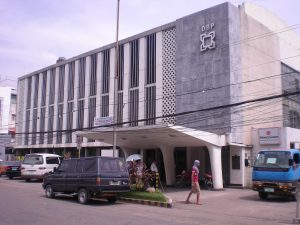The Land Bank of the Philippines and the Development Bank of the Philippines (DBP), the two largest state-owned banks in the country, are planning to merge by the end of the year. As explained by Rappler, this idea was originally proposed during the presidency of Benigno Aquino III before being nixed by Duterte. President Ferdinand Marcos Jr. has resurrected the plan, which calls for the lenders to be combined under the Land Bank, which is the larger of the two. If the merger goes through, it will create the largest bank in the country, which will be fully owned by the government.
While the Department of Finance supports the idea, not everyone agrees including the DBP itself which has voiced opposition to the merger. For one, the two banks have different mandates, with the Land Bank traditionally tasked with agricultural lending while DBP targets industry and enterprise. The government is arguing that consolidating the two will improve profitability and efficiency.
Let’s look at some of the numbers, which I’ve converted from Philippine pesos to U.S. dollars. The combined assets of both banks in 2022 was $77 billion, including $29 billion in loans. Together they were holding $66 billion in customer deposits. That would make them larger than their nearest commercial peer, publicly traded BDO Unibank, which has total assets of $75 billion.
Despite a smaller balance sheet, BDO has a $48 billion loan portfolio, and a customer deposit base of $59 billion. This means BDO has made more loans than the government banks while holding fewer deposits, and this shows in its earnings. Combined after-tax profits for DBP and Land Bank were $655 million in 2022, compared to $1 billion for BDO. Part of the logic of the merger is to streamline operations, eliminate redundancies, and make these banks more profitable.
It’s not surprising that state-owned banks might be less profitable than publicly traded banks answerable to shareholders. The entire reason state-owned banks exist is that they can make loans in places and to people who might otherwise struggle to obtain credit. They also support important strategic national industries even if it’s not especially lucrative. Carrying out such functions might be good for the economy, but not necessarily for the bottom line, which is why state-owned banks are the ones who often end up doing it.
Having said that, state-owned banks can of course also be profitable. Over in neighboring Indonesia, banks had a very good year in 2022. Bank Rakyat Indonesia (BRI) finished the year with $126 billion in total assets, including a $73 billion loan portfolio. BRI targets much of its lending at rural customers and small businesses, including at least $34 billion in microloans to borrowers who often have limited or no collateral. BRI recorded an after-tax profit of over $3 billion in 2022, and paid $1.8 billion in dividends. The government of Indonesia owns 53 percent of the bank.
Here is where things get interesting. When Indonesia began thinking of ways to fund its recently created sovereign wealth fund, the INA, one of the things it hit on was to transfer some of the government’s equity in profitable state-owned banks to the investment fund. This way, the state could avoid directly injecting capital, and profits from the banks would provide a steady source of cash flow. In 2022, the INA held shares in Bank Rakyat Indonesia valued at $1.8 billion and collected a $65 million cash dividend.
The Philippines recently proposed creating its own sovereign wealth fund but has struggled to come up with a clear funding scheme. An early idea involving the use of state pension funds was scrapped, and planners have since begun contemplating an INA-type situation, where seed capital would come from state-owned banks which the fund would then reinvest. The problem is, neither the Land Bank nor DBP in their current structures are optimized for profits.
It seems reasonable to me that if you were going to use government-owned banks as sources of cash for your new sovereign wealth fund, making them more profitable would be a top priority. Consolidating them under a single entity, over which the executive branch could wield tighter control, would also be important. The Lank Bank and DBP have not historically been big profit generators in their current iterations, but a merged entity leveraging economies of scale and streamlined operations could be. And that is probably why we are suddenly seeing new life under this old idea.

































